July 2024
I managed to squeeze in my sixth of the Magnificent Seven cemeteries in London before my departure.
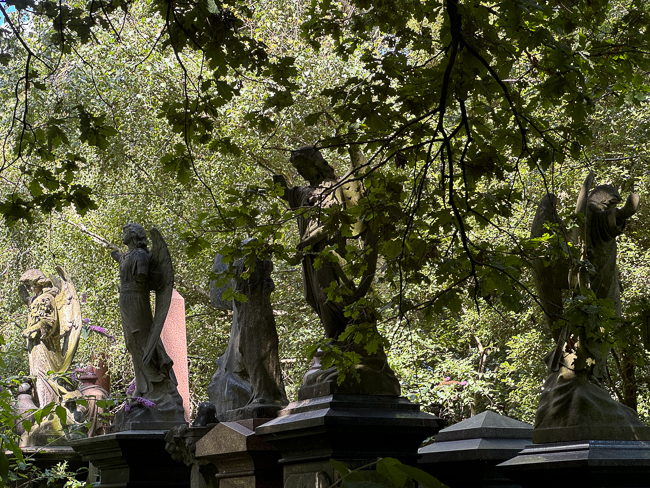
Abney Park in the Borough of Hackney was laid out in the early 18th century by Lady Mary Abney, Dr. Isaac Watts, and the neighboring Hartopp family. The architect was John Hoskins.
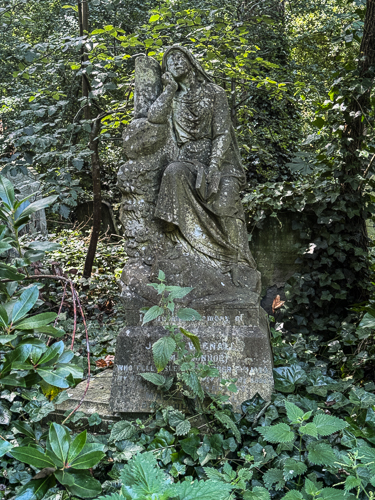
The cemetery is named after Sir Thomas Abney, who served as Lord Mayor of London in 1700–1701. The manor of Stoke Newington belonged to him in the early 18th century, and his townhouse, Abney House, built in 1676, stood on the site of the present cemetery until its demolition in the 1830s.
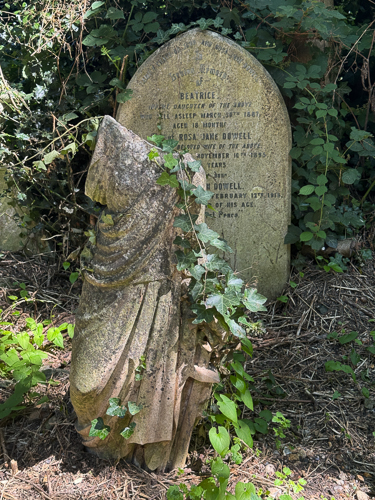
In 1840, it became a non-denominational garden cemetery, a semi-public park arboretum, and an educational institute. A total of 196,843 burials had taken place there up to the year 2000.
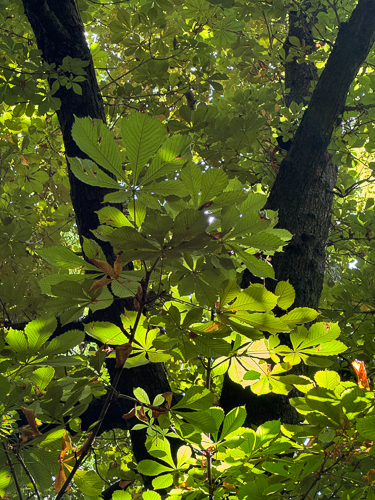
Aesculus hippocastanum – or – Horse Chestnut
Abney Park was the first arboretum to be combined with a cemetery in Europe. Thanks to the founding horticulturist, George Loddiges, it contains 2,500 trees and shrubs arranged around the perimeter alphabetically, from A for Acer (maple trees) to Z for Zanthoxylum (American toothache trees).
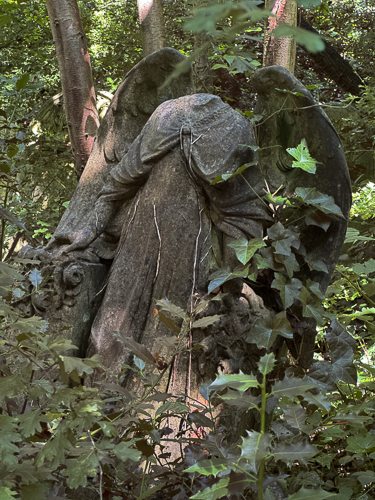
Created in the Victorian period, Abney Park’s entrance was designed by William Hosking in collaboration with Joseph Bonomi the Younger and George Collison II in the then increasingly popular Egyptian Revival style.
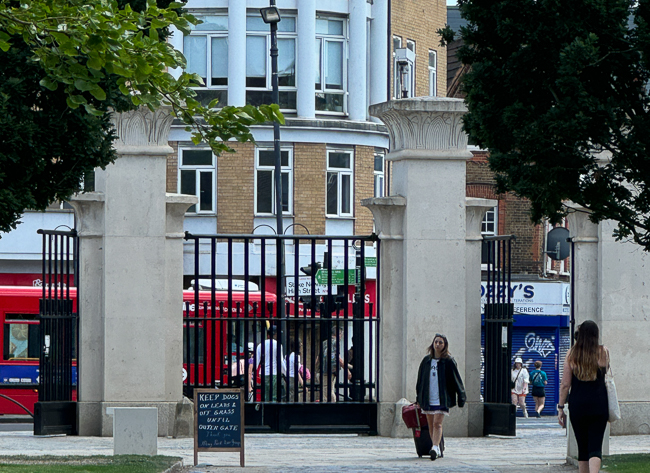
There are many famous people buried in Abney Park. The most prominent being William and Catherine Booth, founders of The Salvation Army. They are buried next to their son Bramwell Booth and various Salvation Army commissioners, including Elijah Cadman, John Lawley, James Dowdle, William Ridsdel, Frederick Booth-Tucker, George Scott Railton, the Army’s first Commissioner, Theodore Kitching and T. Henry Howard, its Chief of Staff.
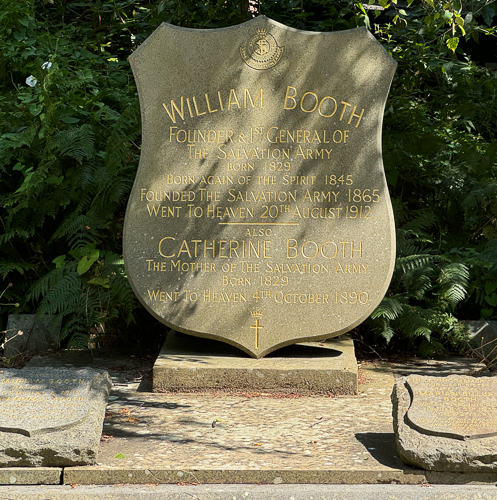
William and Catherine Booth
I walked over four miles inside the cemetery looking for Reverend James Mather (b. 1775), the first person to be laid to rest in Abney Park Cemetery. I was unsuccessful. Mather was a Congregationalist Minister and missionary in India. He was buried on April 26, 1877.
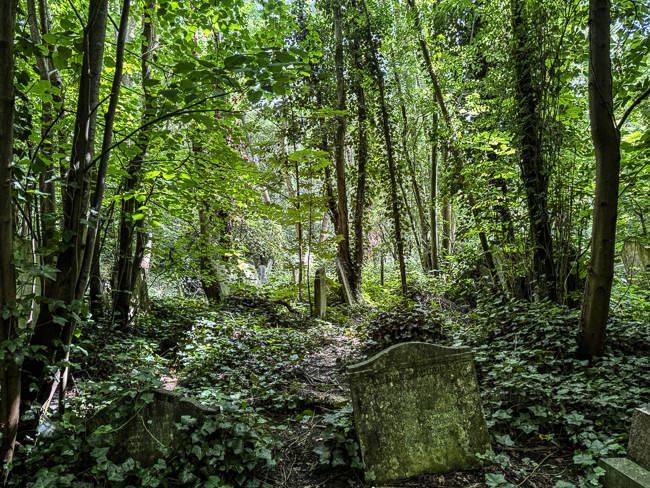
Someplace in there is Mather’s grave.
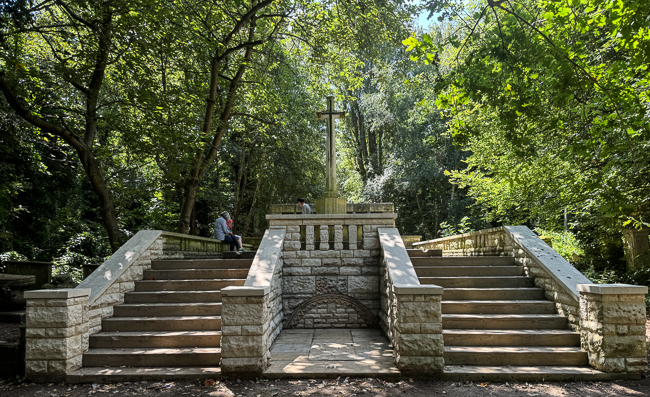
Commonwealth War Memorial
The War Memorial was built over the existing catacombs in 1923. There are 262 Commonwealth burials from the First World War (1914-1918) and a further 113 from the Second World War (1939-1945). The memorial was designed by Sir Reginald Blomfield.
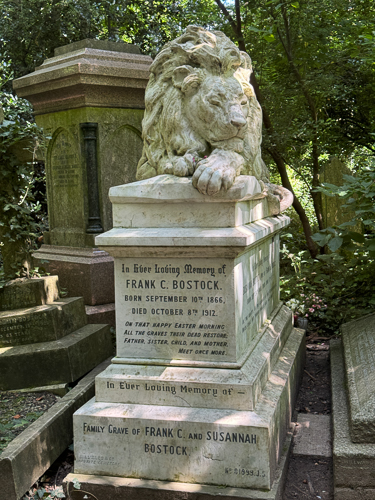
Bostock Lion
Frank Bostock, known as ‘the animal king’, was a menagerist responsible for introducing many exotic animals to Victorian England. The Bostock animal arena was a main attraction at Coney Island in the early 1900s. ‘Bostock’s Arena and Jungle’ is recorded as being held at Earls Court in 1908 and then visited principal cities in the UK over the following years. At the time of his death in 1912, Bostock had over a thousand animals in his various shows. He had circus shows and amusement parks in America, Australia, Europe, and South Africa. The floral tributes at his funeral took up five carriages.
Despite having his finger once bitten off by a monkey and suffering from both a lion and tiger mauling, Bostock died of the flu.

Dr Isaac Watts
Dr. Watts was a famous nonconformist English Christian minister and theologian. He is credited with writing some 750 psalms, which earned him the title “The Father of English Hymnody”. He died in 1748.
The memorial was designed by British sculptor Edward Hodges Baily, who also sculpted the statue of Lord Nelson atop Nelson’s Column.

Joanna Vassa
Joanna Vassa was the daughter of Britain’s first Black activist, Olaudah Equiano, alias Gustavus Vassa. Equiano was shipped to England as a slave, served in the navy, and obtained his freedom in 1766. He became a writer, Methodist, and anti-slavery campaigner. His autobiography The Interesting Narrative of the Life Of Olaudah Equiano, or Gustavus Vassa, The African, was published in 1789.
Vassa married Susannah Cullen of Soham, Cambridgeshire, and they had two daughters. This monument was discovered in bad condition in the early 1990s and restored in 2016 with funds from Abney Park Trust.
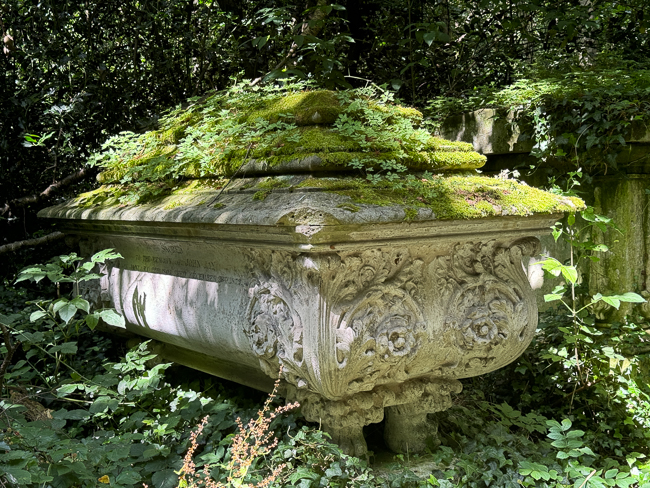
John Jay
I took this picture without even knowing who was buried here, as I found the memorial striking. John Jay built the William Hosking-designed Abney Park Chapel. During the 1850s, he also built the Victorian clock tower and the city clock of the Houses of Parliament. The rich baroque sarcophagus is rumored to have been sculpted by Jay himself.

Abney Park Memorial Chapel
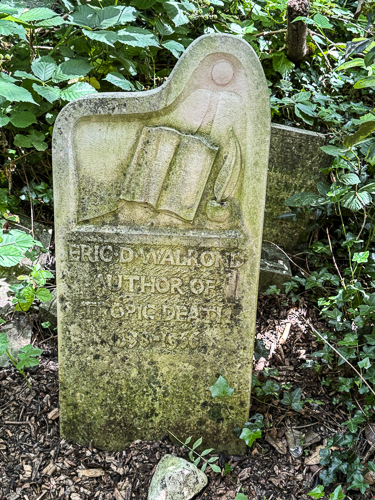
Eric Walrond
African-American Eric Walrond was a Harlem Renaissance writer. Born in Guyana, he moved to New York in the 1920s. His work, including the classic Tropic Death, was influenced by his years growing up in the Caribbean and the legacy of the slave trade. In the 1930s, he moved to England and died in London in 1966. This monument was carved by a member of Abney Park’s stone carving group. Walrond is buried in an unmarked public grave somewhere behind the headstone.
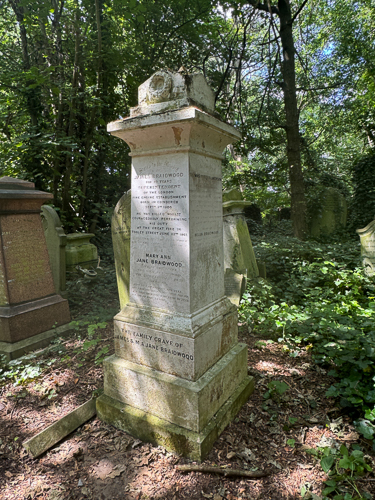
James Braidwood
James Braidwood was a firefighter of Scottish descent. He founded the first fire service in Edinburgh and later became the first director of the London Fire Brigade. By 1830, Braidwood had established principles of firefighting that were published and are still in use today. He died in the Tooley Street fire of 1861 when a falling wall crushed him. The funeral procession was over one mile long, the hearse was tailed by 15 coaches, and representatives of all London Fire Brigades, the Rifle Brigade, and the police were present. This monument was rediscovered in 1981.
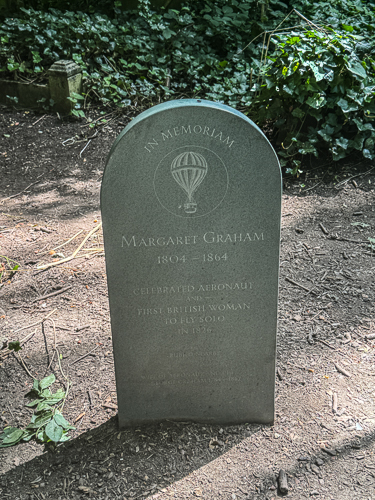
Margaret Graham
This memorial to Margaret Graham, who died in 1864 and was buried in a pauper’s grave, was put up after £5,000 was raised by organizations and members of the public.
Born Margaret Watson in Walcot, Bath, in 1804, she was married to chemist and aeronaut George Graham. She soon became a famous aeronaut in her own right. She built an impressive career as a professional pilot over more than three decades, from the late Georgian era to the mid-Victorian period. In 1826, Margaret Graham, then 22, became the first British woman to fly solo when she ascended in her balloon from Islington in north London. She was also an early and outspoken advocate of women’s right to fly on equal terms with men.
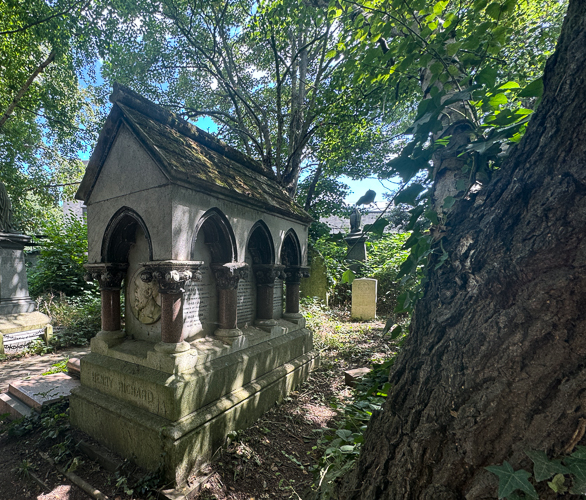
Reverend Henry Richard
Henry Richard was born in Tregaron, Wales, in 1812. He was known as ‘the Apostle of Peace’ because he advocated for peace and international arbitration. He was also respected for his non-conformist and anti-slavery work.
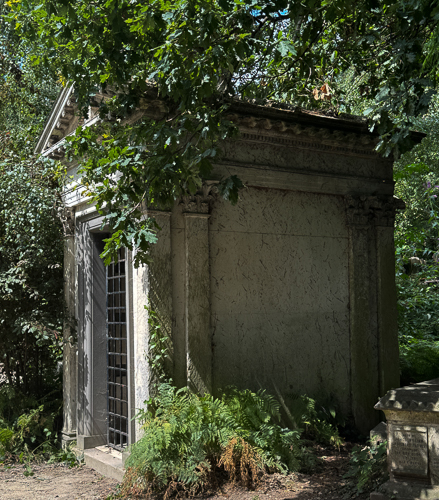
The only mausoleum permitted by the Abney Park Cemetery Company is Dr. Nathaniel Rogers, who died in 1884. He made donations to assist with the restoration of the Pulteney Monument at Westminster Abbey, stained glass windows at St Paul’s Cathedral, Abney Park Chapel, and the Union Chapel. Rogers designed the mausoleum for himself twenty years before his death.
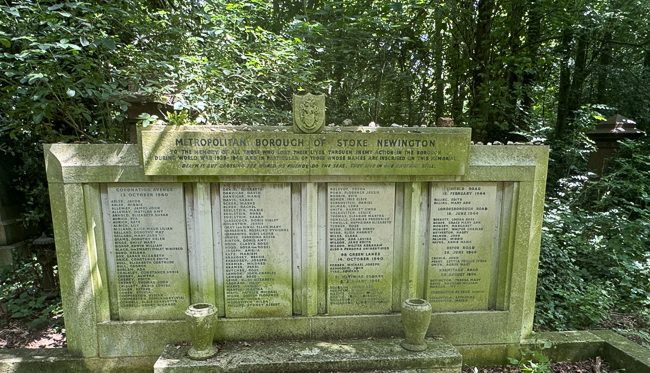
Remembering those who died in the Blitz
The area of Hockney was badly bombed during the Second World War because it was close to important targets such as docks and the City of London. One of the worst blitz tragedies was on October 13, 1940. Over 100 residents of a block of flats were killed when their air raid shelter was hit. Many of those who died were of Jewish heritage and buried in a common grave. The civilian war memorial was built in 1948 to honor all citizens who died during the blitz.
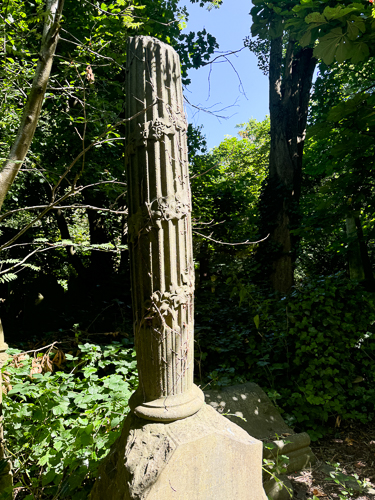 There are no maps of the cemetery, and while some articles speak of path names, the paths are not marked, so it is very hard to find the graves of specific people. There are many Victorian comedians, pantomime actors, and other performers buried here. None of which I found. These include Albert Chevalier (full incredible first name Albert Onésime Britannicus Gwathveoyd Louis Chevalier), songstress and male impersonator Nelly Power, and famous comedian and ‘Dame of Drury Lane’ panto star Herbert Campbell. George Leybourne, aka Champagne, is also buried here. His act was to extol the joys of high living, but he died penniless.
There are no maps of the cemetery, and while some articles speak of path names, the paths are not marked, so it is very hard to find the graves of specific people. There are many Victorian comedians, pantomime actors, and other performers buried here. None of which I found. These include Albert Chevalier (full incredible first name Albert Onésime Britannicus Gwathveoyd Louis Chevalier), songstress and male impersonator Nelly Power, and famous comedian and ‘Dame of Drury Lane’ panto star Herbert Campbell. George Leybourne, aka Champagne, is also buried here. His act was to extol the joys of high living, but he died penniless.
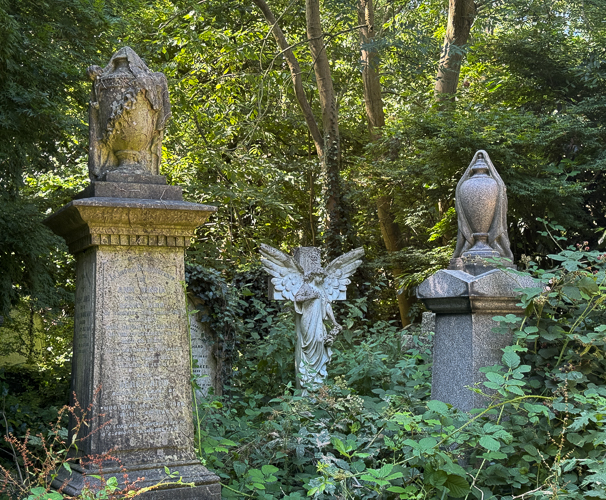
A warning to plant enthusiasts: it is not advisable to go mushrooming in Abney Park. Edible plants are likely to be infused with arsenic from the bodies embalmed in the Victorian era, and mushrooms are also likely to be full of lead because of the lead-lined coffins used by Victorians.